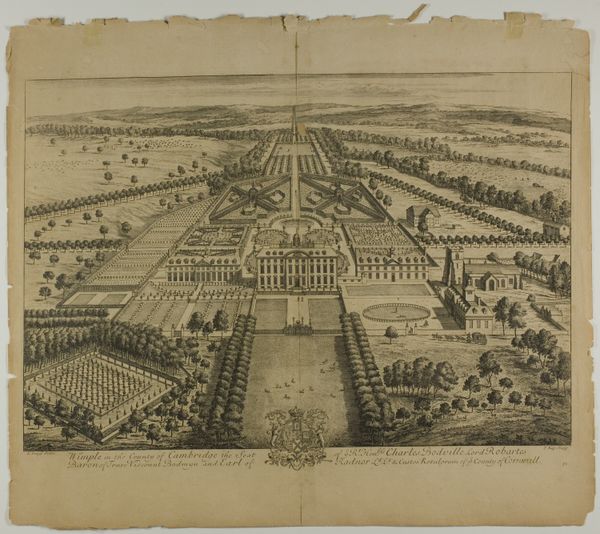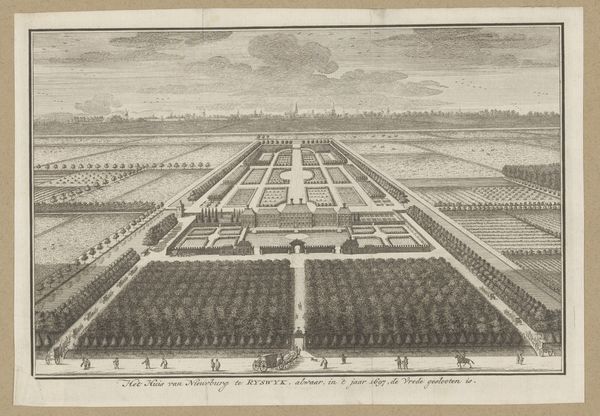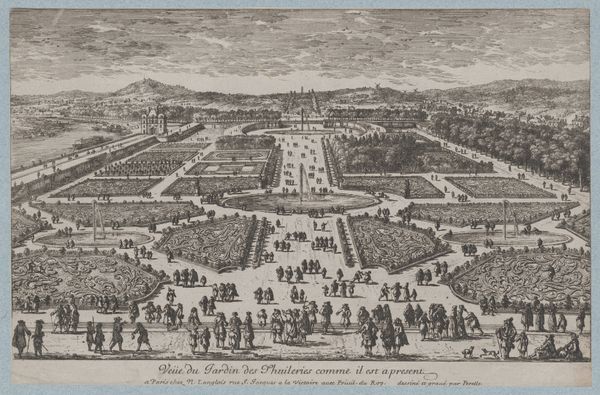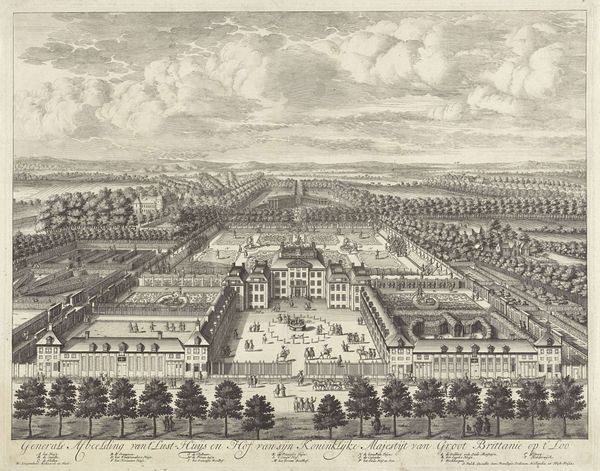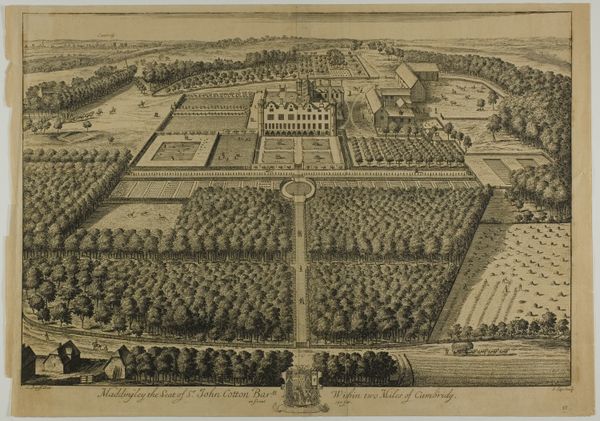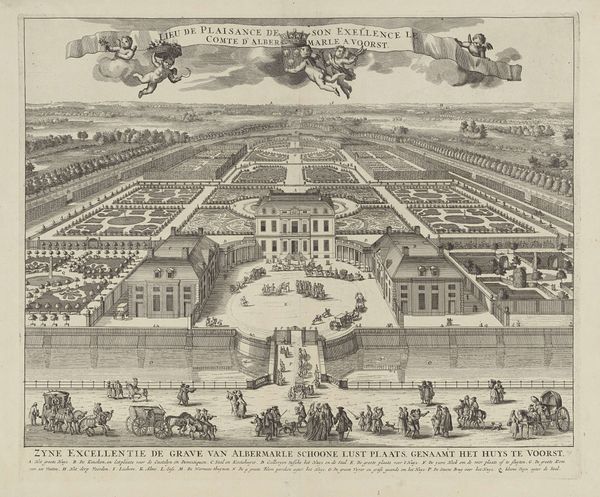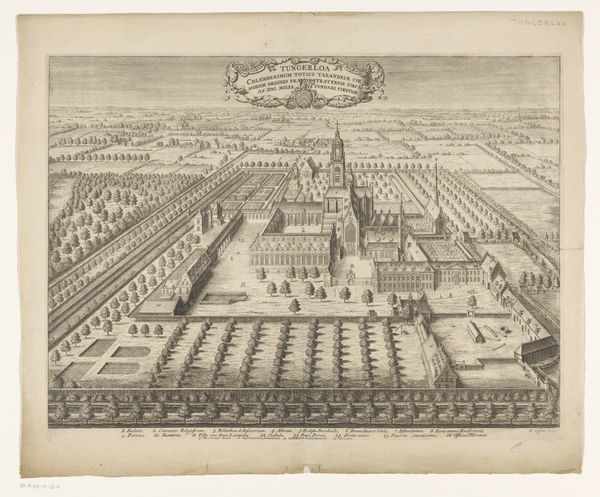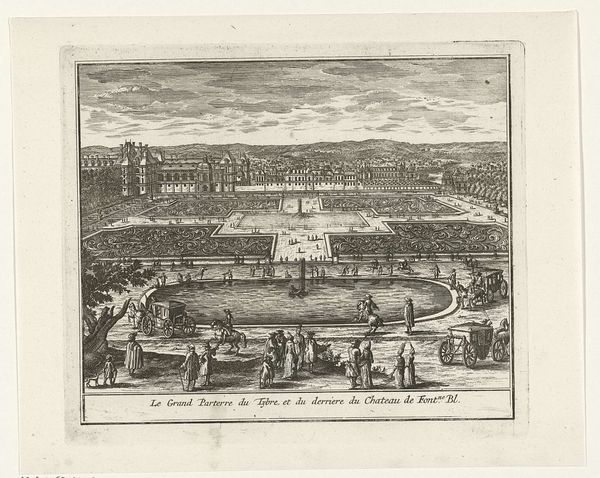
print, engraving
#
baroque
# print
#
old engraving style
#
landscape
#
perspective
#
engraving
Dimensions: height 515 mm, width 778 mm
Copyright: Rijks Museum: Open Domain
Curator: Israel Silvestre's "Gezicht op de tuinen van Vaux-le-Vicomte," created sometime between 1631 and 1691, offers a meticulously detailed engraved view of these renowned gardens. Editor: The overwhelming sense I get is one of control and order. Everything is so precisely laid out, almost oppressively symmetrical. Curator: Observe how Silvestre employs linear perspective to guide the viewer's eye deep into the landscape. Note the deliberate arrangement of parterres, fountains, and allées; these formal elements structure space according to Baroque ideals. Editor: Yet that very order, that attempt to dominate nature, speaks volumes about power, doesn’t it? These aren't simply gardens; they are demonstrations of wealth, privilege and class. We can appreciate its intricate structure, but what was the social cost of this artistry? Curator: The engraving technique itself—the precise lines, the subtle gradations of tone—further enhances the artwork’s sense of controlled elegance and order. This print's inherent flatness contrasts sharply with the illusion of spatial depth that it attempts to create, yielding an interesting tension within its overall design. Editor: Agreed, but looking at it another way: wouldn’t it be fascinating to learn who worked in these gardens and how this space played out in terms of gender or the racial make-up of people allowed into this place? The visible population seems quite homogenous, and likely quite exclusionary too. Curator: Indeed. It’s an exercise in manipulating nature to reflect particular aesthetic principles. A demonstration of technical skill and a testament to the era's aesthetic. Editor: Which were hardly apolitical. Reflecting on this, I now appreciate Silvestre's print both for what it shows—this incredibly mannered garden—but also what it silently hides behind that elaborate artifice.
Comments
No comments
Be the first to comment and join the conversation on the ultimate creative platform.

